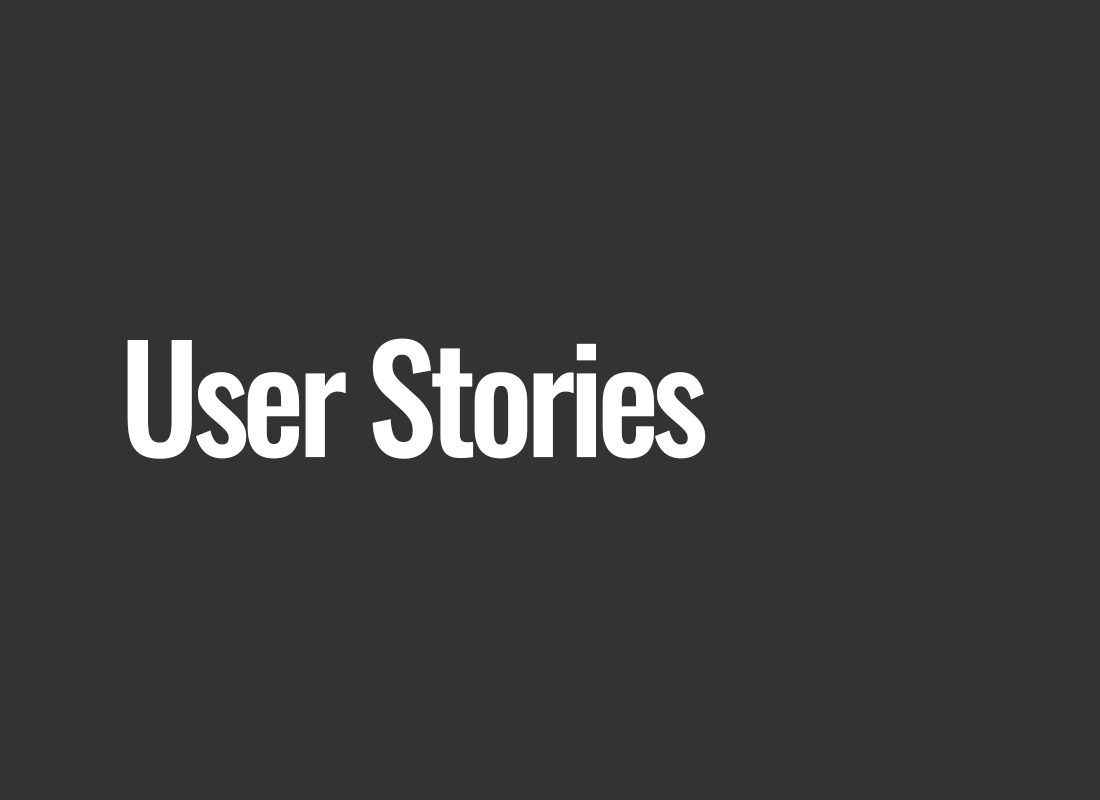User Stories
In today's dynamic business environment, where innovation and competition play a crucial role, understanding and satisfying the customer are extremely important. In this context, the design of products and services must be based on a deep understanding of users' needs, expectations, and experiences. One of the tools that plays a key role in this process is "User Stories" – short, descriptive scenarios that immerse designers and project teams in the user's world.
Defining "User Stories" takes us into the realm of narrative-based design, where the priority is not only technical aspects of functionality but, above all, user experience. This approach not only shapes the product itself but also revolutionizes the design process, enabling teams to identify real user needs and goals.
User narrative as a key to design
The traditional approach to design often focuses on technical specifications, feature lists, and tasks to be completed. However, "User Stories" are an innovative tool that changes the perspective of design – moving us from cold specifications to warm, real user experiences. Instead of focusing on what the product can do, we concentrate on how the user interacts with it in specific situations.
How do "User Stories" work?
"User Stories" are short, concise descriptions of situations in which the user interacts with the product. The key element here is focusing on the individual, on the specific persona for whom we are designing. By telling the user's story, we define their goals, needs, and expectations. This approach allows project teams to have a fuller understanding of the context of use, enabling them to tailor the product to real requirements.
Examples of "User Stories" applications
- E-commerce: Personalizing offers. Consider the story of Ann, a mother of two looking for an elegant dress for a friend's wedding. A traditional approach would focus on general product filtering features. However, through a "User Story," we can identify Ann's specific needs, such as quick find, availability in size M, and return option. This optimizes the e-commerce site, suggesting personalized product proposals for Ann's specific context.
- UX Design: Improving the interface. Let's look at Jack's story, a traveling businessman using a finance management app. A traditional approach might focus on functionalities, but Jack's "User Story" tells us about his need for quick access to information while traveling. This allows project teams to focus on creating an intuitive interface that meets the user's specific expectations.
- Marketing: Creating effective campaigns. Marketing campaigns based on "User Stories" become more authentic and convincing. By telling user stories of those who have achieved real benefits from the product, companies create more personal and effective campaigns. For example, Kasia's story, who lost weight thanks to a special diet, can inspire other customers.
Benefits of using "User Stories"
- Increased user satisfaction. "User Stories" allow designers to better understand the user's perspective, resulting in products more tailored to their real needs. This, in turn, leads to increased user satisfaction with the product.
- Shortened design time. Focusing on specific user stories helps eliminate unnecessary features or tasks, reducing design time and allowing teams to concentrate on key aspects.
- Improved efficiency of marketing campaigns. "User Stories" provide valuable sources of authentic success stories that can be used in marketing campaigns. This builds customer trust and increases the effectiveness of the message.
Implementing "User Stories" in the design process not only provides a deep understanding of the user but also translates into tangible business benefits, such as increased customer satisfaction or shortened time to market. This approach focuses on the people for whom products are created, making design more strategic and effective.
Summary
In the face of the dynamic challenges of today's market, "User Stories" emerge as a key tool that revalues the design process, focusing on the essence – users. Personalization in e-commerce, optimized interfaces in UX design, or authentic marketing campaigns are just the tip of the iceberg of possibilities that this approach creates. "User Stories" not only streamline product development but also contribute to building lasting relationships with customers, strengthening their engagement and loyalty.
In conclusion, integrating "User Stories" into the design process, companies move towards creating products that not only meet expectations but also enrich users' lives. This tool becomes a bridge between the world of technology and the real needs of people, allowing designers to transform user stories into innovative, functional, and, above all, user-expected solutions. Introducing "User Stories" is not just another design stage but a step towards strategic thinking, where business success goes hand in hand with user satisfaction and loyalty.




